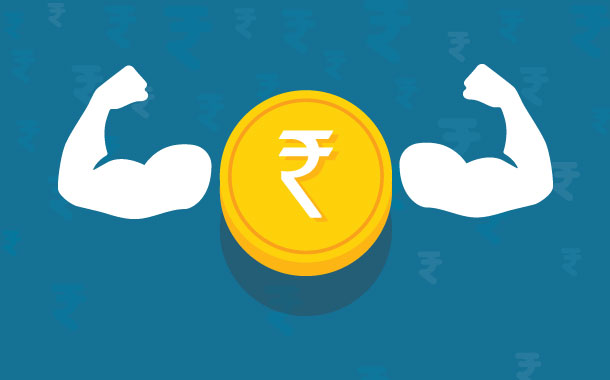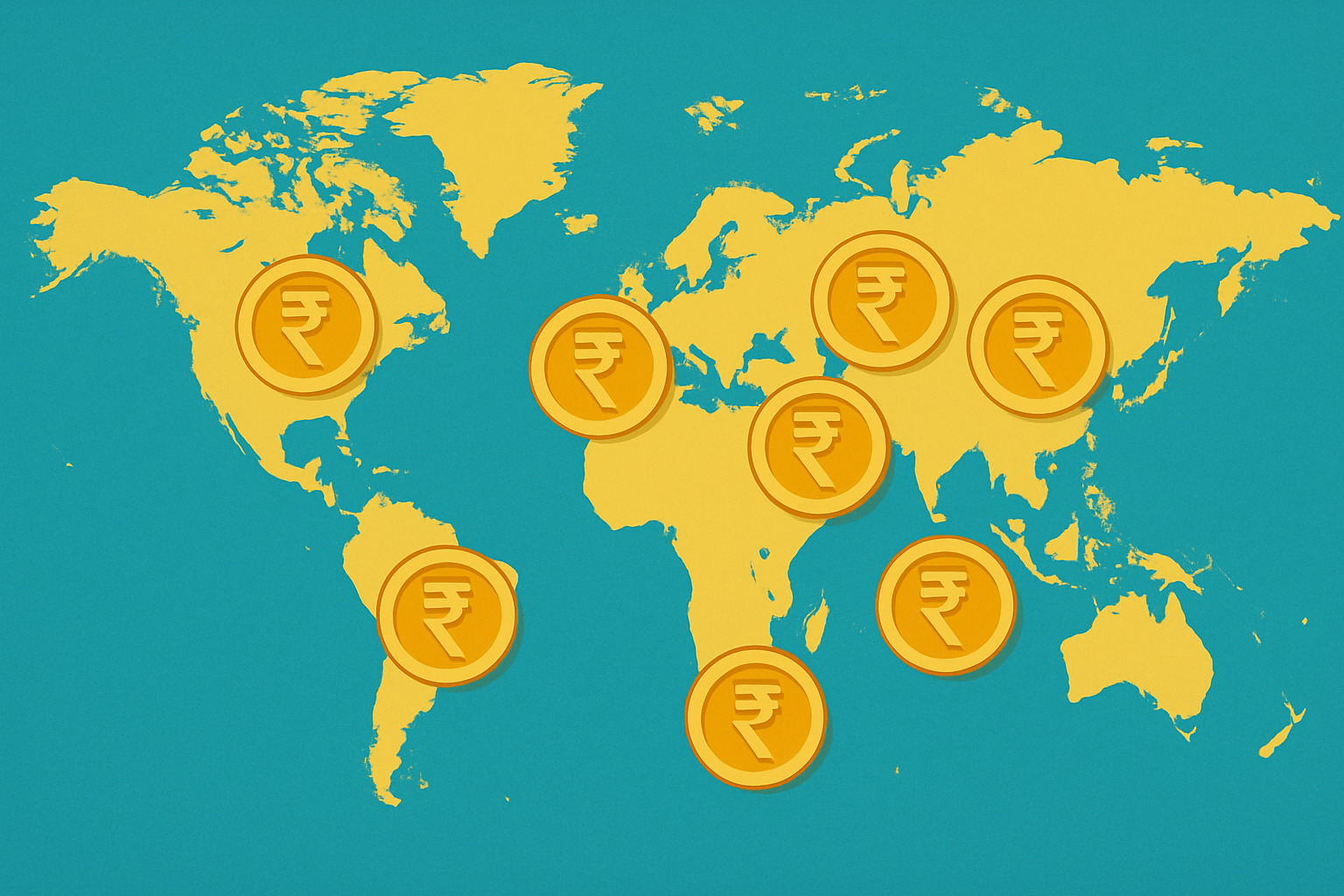The Indian Rupee (INR) is often considered weak compared to major global currencies such as the US Dollar and the Euro. However, there are many countries where the Indian Rupee holds higher value, giving traders and investors more opportunities abroad.
This comprehensive guide examines 15 nations where the Indian Rupee is viewed as robust, how the INR fares in these forex pairs, what factors drive INR strength, and how to potentially build forex strategies around these exotic or emerging market opportunities.
Understanding Currency Value: What Makes INR Strong or Weak?

Currency strength is a relative concept. The Indian Rupee may be weaker than the British Pound but stronger than currencies in many developing economies. The strength of a currency depends on:
Exchange rate vs. Indian Rupee
Local cost of living
Inflation levels
Political and economic stability
Demand for foreign currency (like USD or EUR)
In forex, the strength of a currency indicates how much one unit of that currency can purchase from a different currency. When we state that the Indian Rupee is "strong" in another nation, it suggests that the value of 1 INR exceeds that of the local currency in that country.
It doesn't always mean the INR is a strong currency in general—but relative to these weaker or inflation-prone currencies, it can offer significant trading advantages.
In Which Country Indian Currency Is High? Top 15

1. Vietnam - Vietnamese Dong (VND)
The Vietnamese Dong (VND) has a significantly lower value compared to major world currencies due to decades of inflation, heavy reliance on exports, and state-controlled monetary policies.
Although Vietnam's economy is growing, the large denomination of its currency keeps the INR strong in comparison.
2.Indonesia – Indonesian Rupiah (IDR)
Indonesia's Rupiah (IDR) suffers from persistent inflation and a long history of devaluations.
Despite economic reforms, the currency has not seen significant improvement, allowing the Indian Rupee—backed by strong IT exports and service sectors—to maintain a higher value compared to it.
3. Cambodia – Cambodian Riel (KHR)
The Cambodian Riel (KHR) is lightly used domestically, as most transactions still happen in US Dollars.
Its low demand and minimal international trade exposure have kept its value depressed, allowing the INR to maintain a stronger position in the exchange rate.
4. Sri Lanka – Sri Lankan Rupee (LKR)
Recent economic and political instability during the 2022 debt crisis led to the Sri Lankan Rupee (LKR) collapsing.
High inflation and IMF-driven structural adjustments have further weakened the currency, making the Indian Rupee stronger in relative terms.
5. Nepal – Nepalese Rupee (NPR)
Nepal ties its currency to the Indian Rupee at a set rate, which stabilises its economy while also recognising the strength of the INR.
India's broader economic scale, trade volume, and global integration give the rupee a naturally higher value.
6. Paraguay – Paraguayan Guarani (PYG)
The Paraguayan Guarani (PYG) has low international demand and limited foreign investment.
Combined with inflationary pressures and reliance on a few agricultural exports, its currency has weakened, making the Indian Rupee more valuable in comparison.
7. Laos – Lao Kip (LAK)
The Lao Kip (LAK) has been devalued multiple times due to chronic inflation, low reserves, and economic isolation.
Its limited convertibility and small trade volume against India ensure the INR remains relatively stronger.
8. Zimbabwe – Zimbabwean Dollar (ZWL)
Zimbabwe's monetary history is marked by hyperinflation and frequent currency resets.
The Zimbabwean Dollar (ZWL) has become virtually non-functional, with locals often relying on the US Dollar or South African Rand. Compared to this unstable backdrop, the INR appears very strong.
9. Uzbekistan – Uzbekistani Som (UZS)
Although Uzbekistan has made strides in opening up its economy, its currency, the Uzbekistani Som (UZS), remains weak due to high inflation, past devaluations, and limited integration with global financial markets. INR's steadier trajectory makes it stronger.
10. Mongolia – Mongolian Tugrik (MNT)
The Mongolian Tugrik (MNT) is influenced by the nation's reliance on commodities and the fluctuations in Chinese demand.
Inflation and currency depreciation have persisted due to volatile export earnings, making the Indian Rupee relatively stronger.
11. pakistan – Pakistani Rupee (PKR)
Pakistan's economy faces recurring balance-of-payment crises, inflation, and currency depreciation due to heavy reliance on imports and foreign loans.
As the Pakistani Rupee (PKR) continues to weaken, the INR, though not globally strong, is more stable by comparison.
12. Tanzania – Tanzanian Shilling (TZS)
The Tanzanian Shilling (TZS) faces challenges due to high inflation and reliance on agriculture and tourism.
Limited industrialisation and external shocks have eroded its value, while India's diversified economy supports a comparatively stronger rupee.
13. Chile – Chilean Peso (CLP)
Although Chile is more stable than others on the list, the Chilean Peso (CLP) is subject to fluctuations tied to global copper prices.
INR maintains an edge in value when commodity prices drop or when Latin American currencies depreciate due to inflation or political shifts.
14. Costa Rica – Costa Rican Colón (CRC)
The Costa Rican Colón (CRC) has experienced inflation and a gradual decline due to budget deficits and currency devaluations.
The INR's consistent performance, along with India's economic prospects, gives it increased power in currency markets.
15. Hungary – Hungarian Forint (HUF)
Hungary's Forint (HUF) has declined over the years due to inflation, tensions with the EU and dependence on external funding.
Although it isn't as weak as some others on the list, the Indian Rupee continues to have comparatively stronger purchasing power, particularly since Hungary's inflation is still high.
Conclusion
In conclusion, although the Indian Rupee might not be a global powerhouse, it holds a strong position in the foreign exchange market in several countries. For savvy traders, INR's strength against inflation-prone, politically unstable, or low-growth currencies offers valuable trading setups.
In suitable forex pairs and under the right strategy, INR-based trading can offer diversification, volatility, and profit potential—especially for traders who understand emerging markets.
Disclaimer: This material is for general information purposes only and is not intended as (and should not be considered to be) financial, investment or other advice on which reliance should be placed. No opinion given in the material constitutes a recommendation by EBC or the author that any particular investment, security, transaction or investment strategy is suitable for any specific person.























